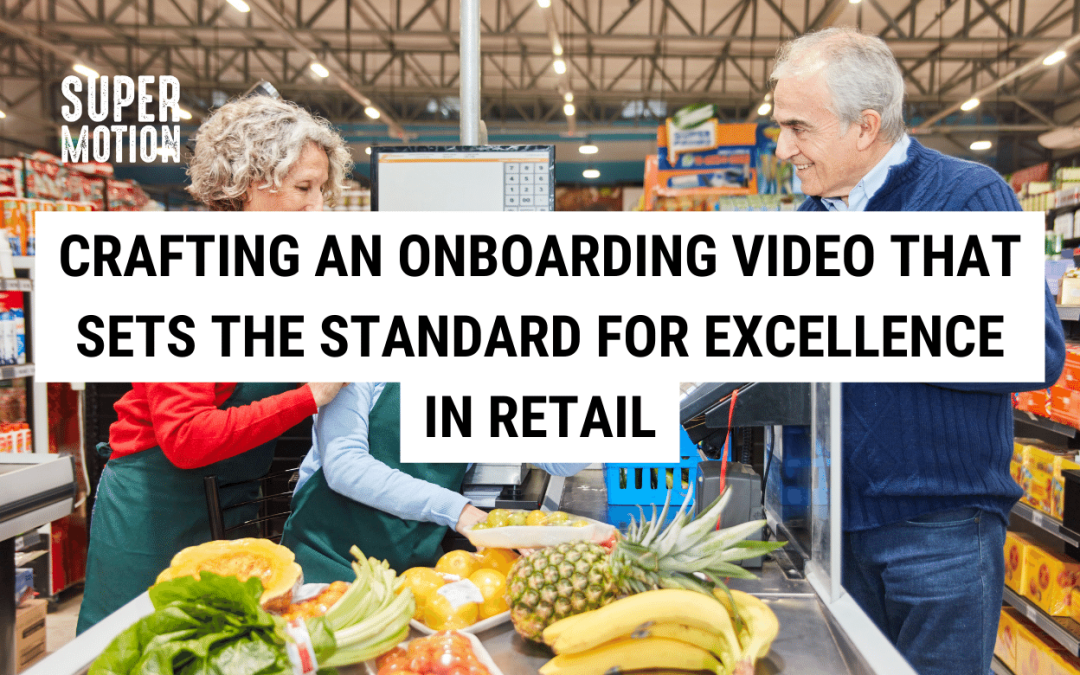
Crafting an Onboarding Video That Sets the Standard for Excellence in Retail
Crafting an Onboarding Video That Sets the Standard for Excellence in Retail
As an HR Manager in a fast-paced retail environment, you’ll understand the importance of onboarding new employees so that they’re engaged members of the team and able to take on their new role quickly.
Equally, you’re probably aware of all the challenges you may face if a new employee isn’t onboarded properly.
One tool in your arsenal that you may not be using yet is an onboarding video. They’re a great way to turn your onboarding into an immersive, informative, and inspiring experience. An onboarding video that not only imparts critical knowledge but also champions your company culture right from the start.
At Super Motion, we support HR Managers to deliver exciting and engaging onboarding videos that make use of excellent visual storytelling. Today, we’re sharing our knowledge of what goes into making an excellent onboarding video for the retail industry.
Defining Company Culture from the Get-Go
Company culture breathes life into the workforce. It’s what makes employees not just show up, but truly belong. In the world of retail, where the customer experience hinges on employee engagement, culture is king. Your video’s first segment should be a window into your company’s personality, sharing its values, mission, and vision.
Keep language clear and aspirations high — visual aids and animated infographics can bring these abstract concepts to life. This part isn’t just about telling; it’s about showing the new hire where they fit in the bigger picture of what the company is striving to achieve. This creates a sense of purpose and alignment that money can’t buy.
Team Introductions that Warm the Heart
We all crave a sense of belonging from the first day at any new job. The second segment of your onboarding video should feature warm welcomes and insights from team leaders and key members.
This isn’t just about who’s who; it’s about the faces and stories that convey a team united behind a common goal. Short, personal messages work wonders — they break the ice and set the tone for the friendly and supportive relationships that your workplace champions.

Making Expectations Crystal Clear
One of the most anxiety-inducing aspects of a new job is uncertainty about what’s expected. Your ongoing success in or out of the retail industry relies on clear communication.
Use this part of the onboarding video to ensure that your new employee has a clarity and understanding of their role, key responsibilities, and how they fit into the business’s strategy.
When they understand their part in the bigger picture, they’re more able to engage fully in their role and contribute to the success of the organisation.
Training Wheels Are Ready to Roll
Retail is filled with nuanced practices that can make or break a brand’s integrity. This means training has to be a non-negotiable.
The onboarding video should provide a comprehensive summary of the training structure and resources available, including role-specific modules and the timeline for completion. In retail, knowledge is power, and ensuring your team has the knowledge they need isn’t just responsible — it’s strategic.
Compliance and Retail Ethics
Policies and compliance may not be the most exciting aspect of retail, but they’re among the most important — and your video must reflect this.
A clear, unambiguous overview of company policies, health and safety guidelines, and any retail-specific compliance requirements is essential.
Make sure that you don’t just present the information but underscore the ‘why’ — people are more willing to follow rules when they know why they exist and why they’re important.
Navigating the Retail Workplace
Finding your way around the building when you start a new job is just another hurdle for a new employee’s career journey.
Your onboarding video is the perfect platform for a virtual tour of the retail environment, from the shop floor to stockrooms and break areas. Familiarising them with the lay of the land eases that first-day anxiety and lets them know where to find resources and assistance.
The Perks
Rewards and benefits can be key motivators for an employee to join a new business — but often companies forget to tell their employees what they are and how they can take advantage of them.
Don’t waste the opportunity to shout about the perks — make sure you vividly capture these in your video, clearly explaining benefits and employee discounts available to them.
The goal here is to make the new employee feel not only appreciated, but also excited about the opportunities your company provides.
Prepare the Employee for Day One
End your onboarding video with a clear call-to-action. The final segment should outline next steps, including any immediate tasks to be completed before day one on the job. This section acts as a roadmap, ensuring they feel equipped and ready for their first shift.

Conclusion
Crafting the ultimate onboarding video may sound like a daunting task, but with the right expertise, it becomes an exciting opportunity to set the stage for a new level of engagement and performance in your retail team.
At Super Motion, we know the value of exceptional onboarding. A well-produced video sets the standard from the word go, making your new employees not just excited about starting their new role, but also sets them up for success.
If you’d like to set your employees up for success, book a free 30-minute strategy call with Super Motion today to discuss how an onboarding video can enrich your onboarding experience.
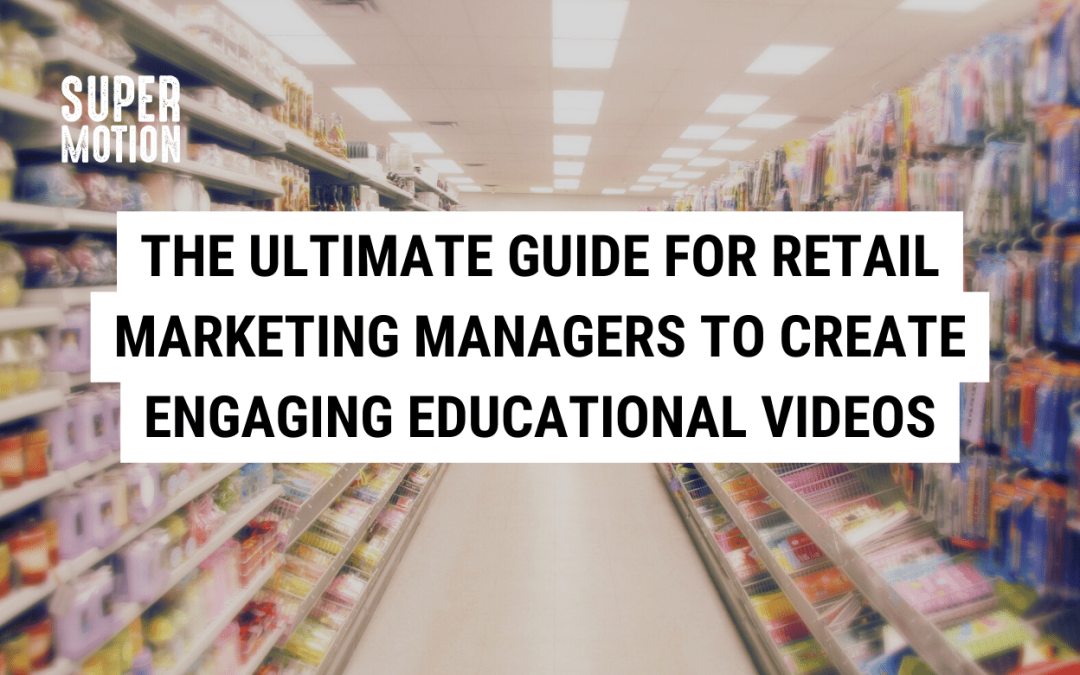

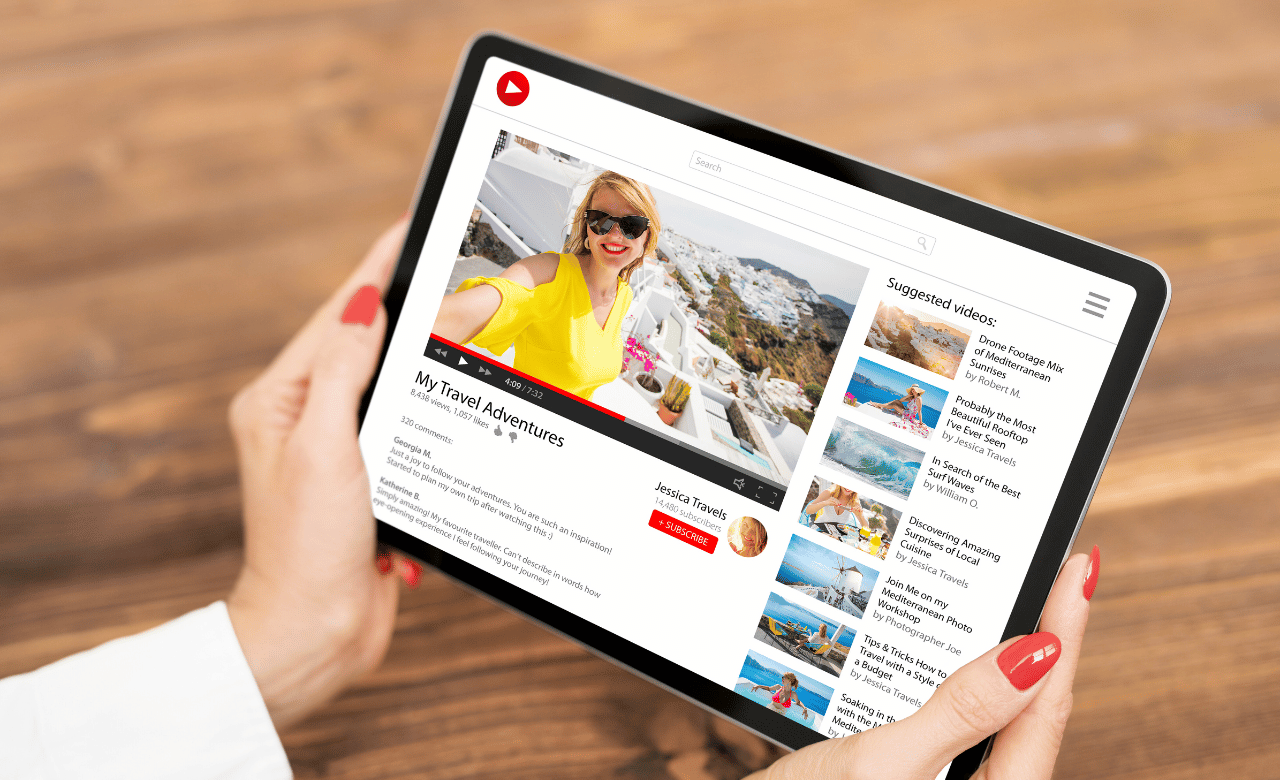



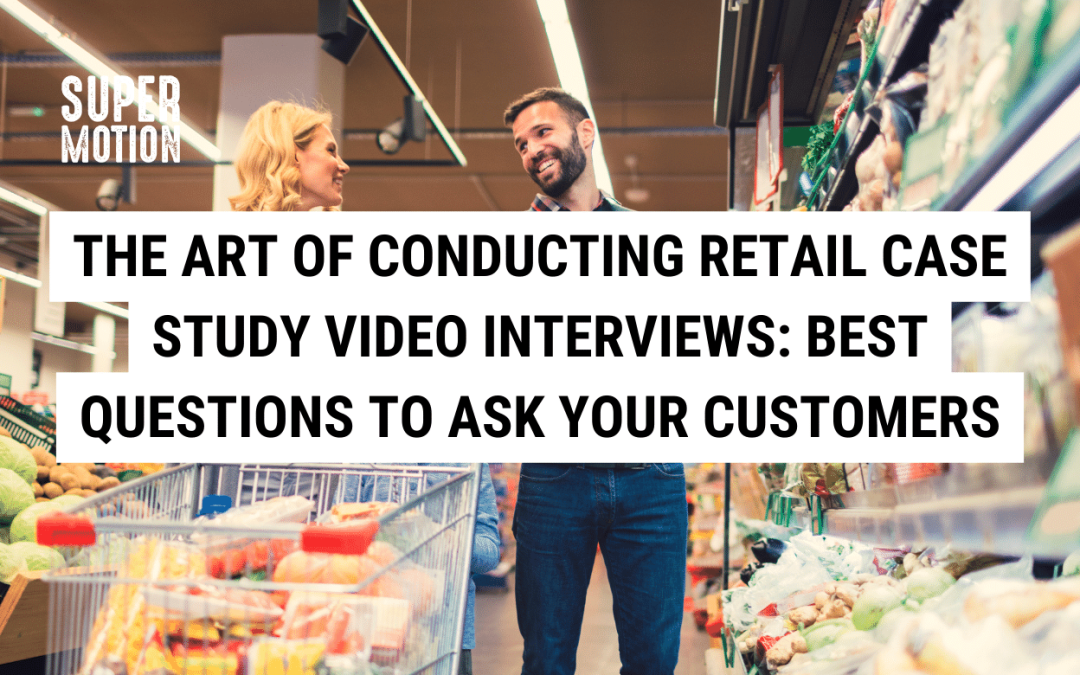



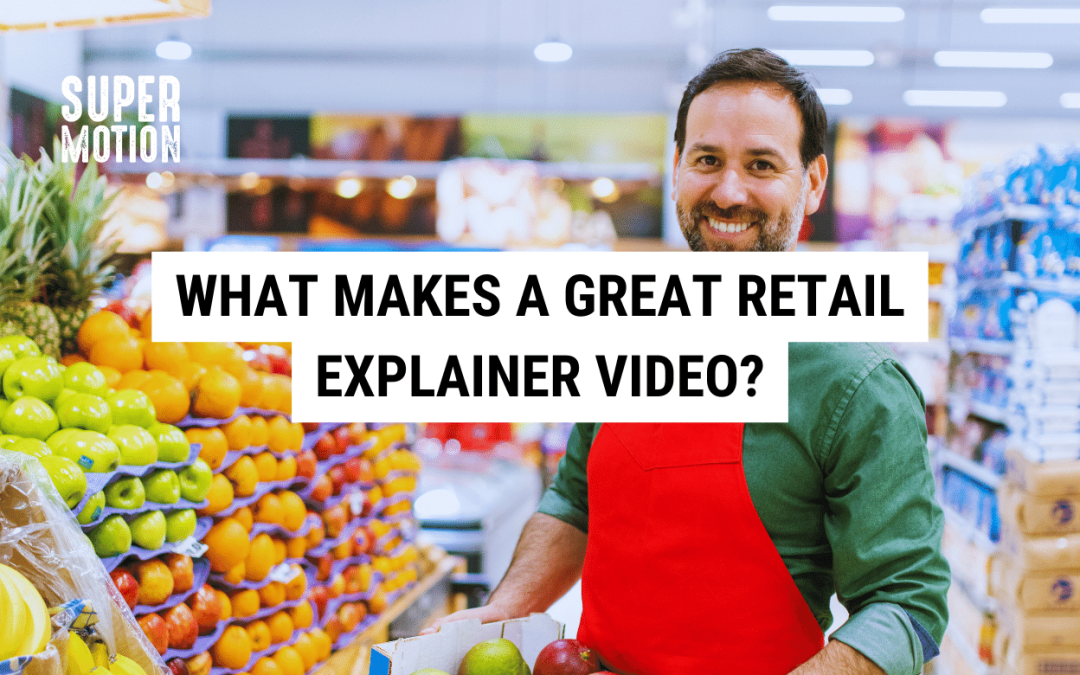




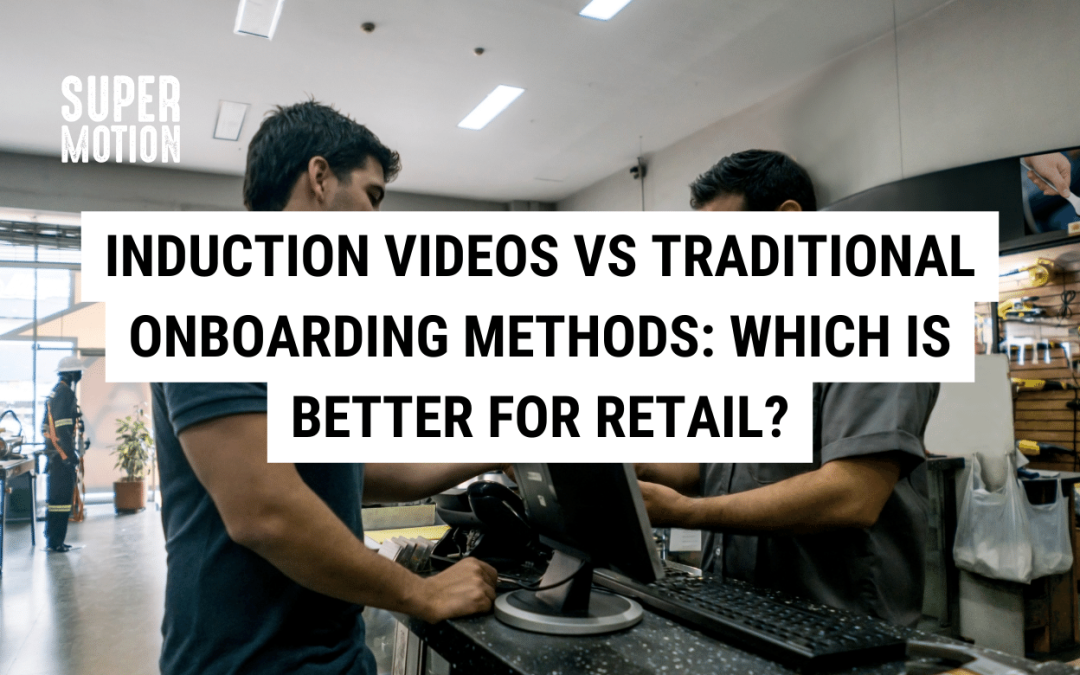


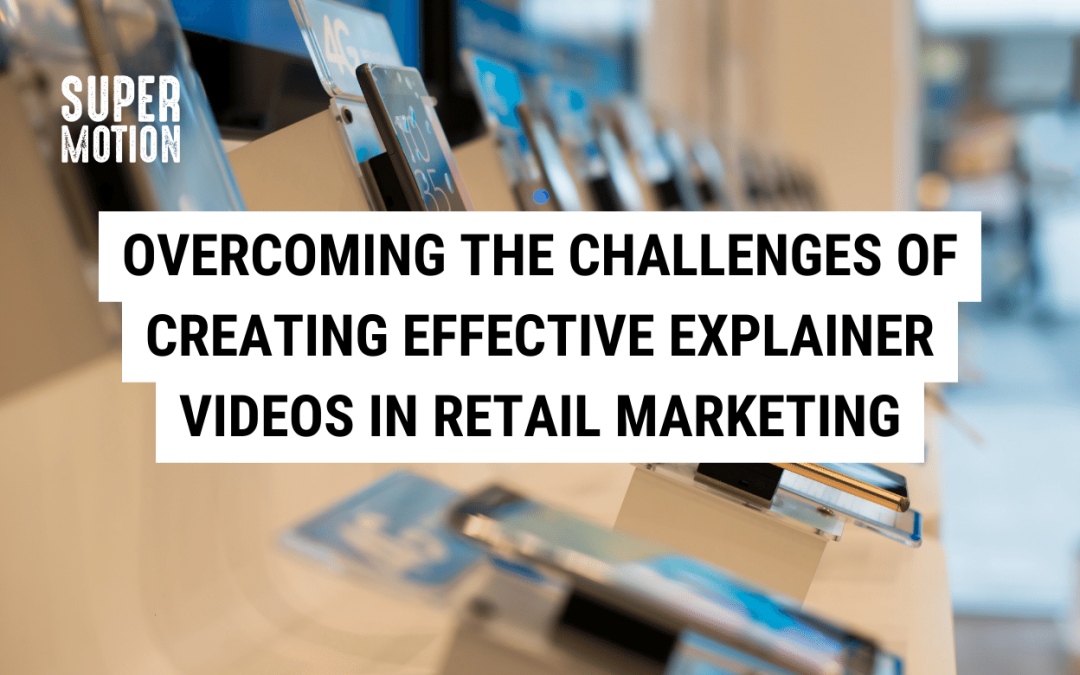




Recent Comments